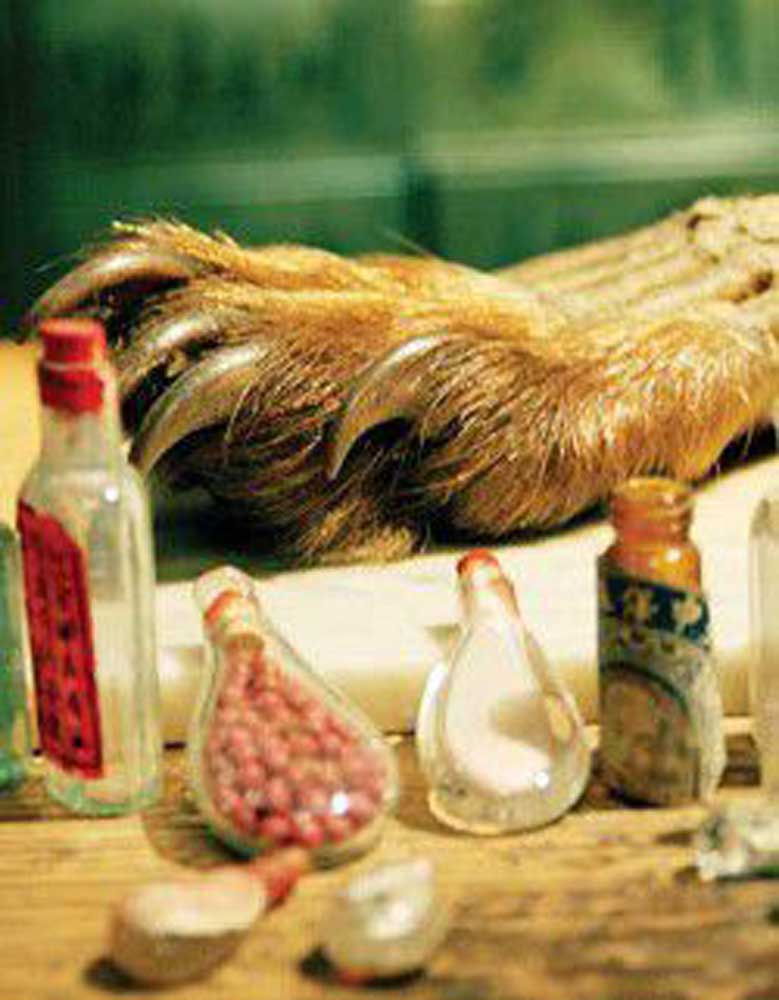‘Golden flower’ of Chinese history open to visitors to see, tour
Published 5:00 pm Tuesday, July 27, 2010

- 'Golden flower' of Chinese history open to visitors to see, tour
JOHN DAY – Time stands still at the Kam Wah Chung State Heritage Site, where the rooms appear just as they were around the turn of the 20th century.
Oranges, dried with the passing of years, grace a Buddhist/Taoist altar; hundreds of small boxes of herbs and other Chinese medicines are neatly stacked; and containers of food sit on shelves, their contents left undisturbed.
On the walls are epigrams written in Chinese on red paper – one reads, “Good friends make good business; good business makes good friends.”
Kam Wah Chung, which translates “Golden Flower of Prosperity,” was the home and business operation of Ing “Doc” Hay and Lung On, who bought the building in 1885.
Gold was discovered in nearby Canyon City in 1862, and the area saw an influx of people who came to work in the mining industry, including Chinese immigrants.
In the heart of Chinatown in John Day stood Kam Wah Chung, a center of activity for the Chinese population of Grant County.
Hay and On, both born in 1862, had talents which enriched the community.
Doc Hay was widely known for his unique ability to cure diverse ailments.
It is believed he learned his trade in China as an apprentice, but he also kept medical books.
Pulsology was his method for diagnosing medical problems for his patients who included the local Chinese and white people, as well as those who traveled miles to see him.
The patient placed their wrist on a pillow while Doc Hay felt their pulse.
If the patient was well he would send them on their way saying, “Go home, and have a happy life.” But if a cure was needed he had everything at hand – a pinch of this, a sprinkle of that – which was then packaged in paper.
Instructions were given, and the patient would take the medicine home to make a tea, or for some wounds make a paste, to bring relief.
In 1936, one young newlywed from Burns visited Doc Hay with her mother who needed a treatment. The younger woman didn’t know she was pregnant, yet Doc Hay, after feeling her pulse, predicted that she would have multiples.
Several months later the young woman had triplets – two boys and one girl.
Uncashed checks totaling about $23,000 – which would have been worth about $250,000 today – were found under the mattress of Doc Hay’s bed.
Lung On had an entrepreneurial spirit, and ran about 12 businesses in his 50-plus years in John Day.
He ran a general store, housed in Kam Wah Chung. Besides food items and fireworks, alcohol and tobacco were his biggest sellers – typical of a gold rush town.
When the building was “rediscovered” in the 1970s after being closed up for at least 20 years, 95 bottles of whiskey were found boxed up under the floorboards.
In the room next to the general store, Lung On rented out four bunks at 25 cents for one week – three or four to a bunk.
He had the first car dealership in town – the Tourist Garage.
Other services he offered included reading and writing letters for people, selling catalog clothing and fortune telling.
With mining and other jobs available in the 1870-90s, the Chinese population in the area was about 2,000; however, only three to five of the 2,000 were women due to the Chinese Exclusion Act of 1882, which prevented Chinese men from bringing their families with them to the U.S.
As the local job market dried up in 1910, the Chinese population in the John Day/Canyon City area dwindled to less than 20.
Still, Doc Hay and Lung On stayed at Kam Wah Chung.
Both were married, their wives and children living in China.
Lung On’s wife once wrote, “It’s been over 30 years. Don’t you love me anymore? Why don’t you come home?”
Lung On died in 1940 at the age of 78. He insisted on being buried locally.
“I will always be an American,” he said.
Ing Hay suffered a broken hip in 1948 and moved to Portland to receive care. He died at the age of 89 and is buried next to Lung On in the John Day Cemetery on Valley View Drive.
The museum’s interpretive center is at 116 NW Bridge St.; to reach the building, turn north from Main Street to Canton Street, and travel half a block. The center is on the right across from the United Methodist Church. Kam Wah Chung is farther up the street within walking distance near the city park and Gleason Pool.
To contact the museum staff, including curator Christy Sweet, call 541-575-2800.




